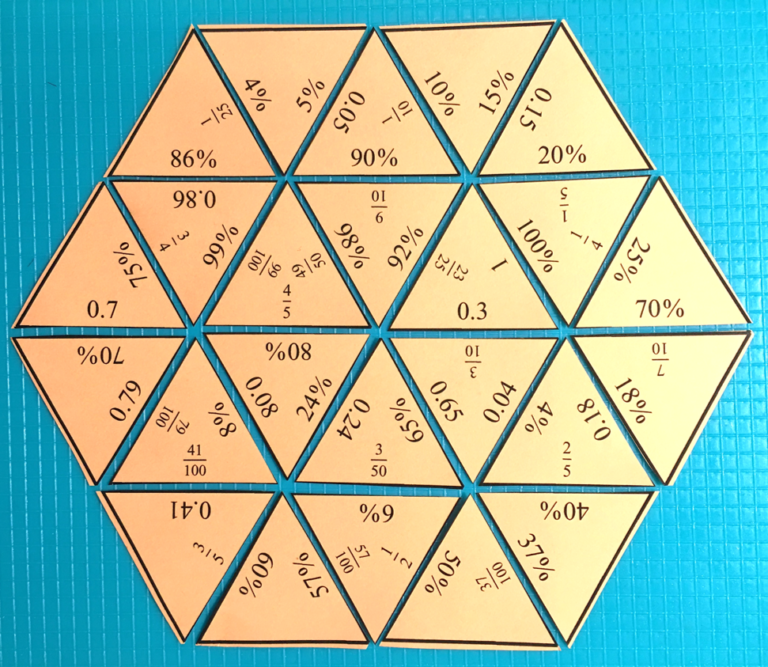

If a fraction is best, write the percent in the numerator and 100 in the denominator, then reduce to lowest terms. Depending on the context, a decimal or a fraction may be the appropriate representation. To convert from a percent to a regular number, simply divide the percent by 100. Percents can be any number, whether positive or negative. Thus, for example, 50% of the apples is the same as of the apples. A percent is thus a fraction (note how the symbol % looks suspiciously like a fraction!) where the number before the symbol represents the portion per hundred. Thus, 100% and 100 percent are the same thing.

For instance, 100 percent refers to an entirety-someone who is "giving 100 percent" is "giving it his all." The term percent actually means "per hundred," and it is often represented using the symbol %. For instance, someone might say, "I am giving 100 percent to the job," or "the sales tax rate is 5 percent." In each of these instances, the figure referred to using the term percent refers to some portion of a whole amount. You probably have heard the word percent used in casual conversation and perhaps even in some slightly more mathematical contexts. Solution: Follow the procedure outlined in the discussion above. Practice Problem: Convert the following decimals to fractions. In part c, note that the decimal repeats-you need only perform a couple steps in the division to recognize this repetition. Solution: In each case, do the long division of the numerator divided by the denominator. Practice Problem: Convert each fraction to a decimal. The following practice problems provide you with the opportunity to practice converting fractions to decimals and vice versa. Any decimal that can be converted to a fraction with an integer numerator and integer denominator is called a rational number repeating decimals (even though they have an infinite number of decimal places) and decimals with a finite number of decimal places are all rational numbers. For instance,ĭecimals with an infinite number of decimal places but no repeating pattern cannot be converted to a fraction with an integer numerator and integer denominator-these numbers are called irrational numbers. This approach works for any fraction with a finite number of decimal places, even those that include some number to the left of the decimal point. Interested in learning more? Why not take an online Pre-Algebra course? The operation of dividing 64 by 100 actually takes the decimal point (which is located next to the 4-64.0) and moves it to the left two places, leaving 0.64. The fraction corresponding to this decimal would have a numerator of 64 (we eliminate the decimal point) and a denominator of 100. Generally, given some decimal, we can convert to a fraction by writing in the numerator the decimal, less the decimal point, and by writing in the denominator 1 followed by the same number of zeroes as the number of decimal places. Reducing to lowest terms yields the following result. If we multiply this decimal by 1,000, we get 582:Ĭoncomitantly, we can divide 582 by 1,000 to get 0.582.īut we can also write this division operation as a fraction: Consider the decimal 0.582, for instance. A decimal is the same as 0.274274274274.Ĭonverting a decimal to a fraction can be somewhat simpler (as long as the decimal is not repeating, although even repeating decimals can be converted to fractions-it just requires a bit more work). The bar indicates that the 6 repeats unendingly. Such repeating decimals are occasionally written as, in the case of this example. Let's look at a portion of the long division for this fraction.Ĭlearly, the long division will continue indefinitely, adding additional sixes to the decimal without end. In some instances, a fraction cannot be written as a decimal with a finite (limited) number of decimal places. Note that careful track must be kept of the decimal point when performing this type of division.

The example of is shown below for the purposes of illustration. Converting from a fraction to a decimal is a simple matter of performing the long division (or, in some cases, just using a calculator). This representation of a non-integer number is called a decimal. If you divide 3 by 4, for instance, you will not get a result of instead, you will get 0.75. O Understand the meaning of a ratio (proportion) and be able to use it in simple casesĪs you have probably noticed, most basic calculators (as well as many more-advanced calculators) do not deal with fractions. O Recognize percents and understand their relationship to decimals, fractions, and ratios
#FRACTIONS TO PERCENTAGES VICE VERSA HOW TO#
O Recognize a decimal and know how to convert from decimals to fractions (and vice versa)


 0 kommentar(er)
0 kommentar(er)
